#MobileGameDevelopment
Explore tagged Tumblr posts
Text

artwork for making mobile RPG but stopped to develop caused by personal reason ;(
hope someone like it
3 notes
·
View notes
Text
New Open World Game Topped Pre-registration, Another Masterpiece by Nuverse
Recently, many new games from leading developers have gone on an advertising spree. In addition to Moonton's Watcher Of Realms, according to AppGrowing, Nuverse's Dragonheir: Silent Gods started a massive advertising campaign, topped the Google Play Pre-registration, and became a Top 5 game among loads of games that are already released by top Chinese developers.
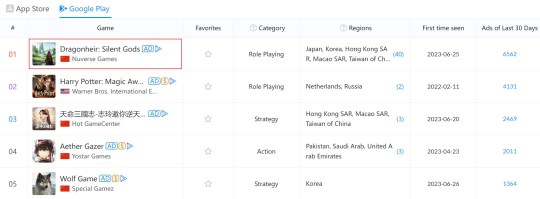
Source: AppGrowing
Dragonheir: Silent Gods is about to be launched in September 2023, according to data.ai. After the release of the global version of Earth: Revival(《星球:重啟》) in February, Dragonheir: Silent Gods will be the second Nuverse game to be available worldwide this year, carrying the company's expectation of building a global brand.
01 An Open-world TRPG on 5-Year Development and $15 M
Dragonheir: Silent Gods is a D&D open-world semi-real-time strategy RPG. It is said to have taken five years to develop and cost over $15 million, making it the most "heavyweight" of the known Nuverse games.
In terms of art, Dragonheir: Silent Gods combines vintage oil painting with the widely accepted dark western fantasy style, differentiating it from the "cartoonish" games of the same genre. Delicate character and scene modeling make the game looks sophisticated.

Image Credit: Dragonheir: Silent Gods
Of course, in the case of the increasingly competitive game market, "appearance" alone is not enough to attract players. Officially, the game story text is now approaching 1 million words, and all the dialogue is in English voice-over, including the invited DND series "Critical Role" voice actor Mathew Mercer. Moreover, with the support of high-level music, Dragonheir: Silent Gods tries to revive the D&D-style fantasy world in all aspects.
Along with the vast worldview and plot, the main selling point of Dragonheir: Silent Gods is the "open world adventure" gameplay. Players can freely explore the game world, collect resources, solve challenges, and learn about the characters‘ stories.
Dragonheir: Silent Gods has little innovation in combat. The game adopts a normal turn-based model, incorporating auto chess gameplay to enhance strategy. Players select characters to arrange a team of 5 to fight, and there is a common TRPG "dice throwing" in the process.
Similar to Earth: Revival, Dragonheir: Silent Gods will be released on multiple platforms. According to the official website, the game will not only be available on the mobile platform of App Store and Google Play but also on Steam.
02 Advertising Strategy of Dragonheir: Silent Gods
According to AppGrowing, Dragonheir: Silent Gods began advertising on May 24, which coincides with the opening of the game's PC and Android beta test in Hong Kong, Macau and Taiwan of China.
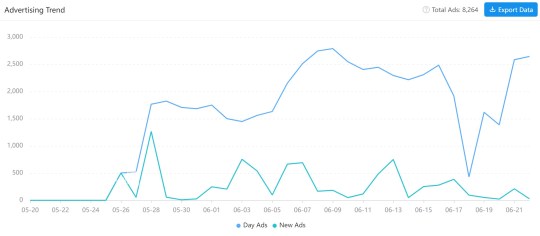
Source: AppGrowing
In terms of media, Dragonheir: Silent Gods mainly invested in Meta Audience Network, Messenger, Instagram, and Facebook, and the share of each is relatively average. Its target markets are in Europe and America. The ad format of the game is mainly in-feed, while creatives are mostly horizontal (including square) videos.
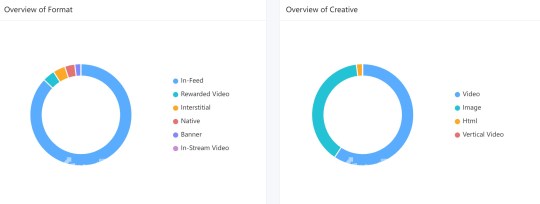
Source: AppGrowing
The creatives of Dragonheir: Silent Gods focus on the content of the game itself and did not go too far, probably because it is still in the early pre-registration advertising stage.
Showing World View & Scenes
DND theme is appealing enough for European and American players. Dragonheir: Silent Gods focuses on the abundant and detailed surroundings in the video, labeling the game as "high quality" and attracting players interested in the genre.
youtube
Some creatives also combine the exploration gameplay. For example, the following video shows the beautiful scenes of several maps through "team exploration".
youtube
Showing Characters
Characters have always been one of the promotional methods for RPG games. Dragonheir: Silent Gods stated that the number of heroes and NPCs in the game has exceeded 200, and the content is also used in ad creatives.
For example, this video shows the character's exquisite modeling at the beginning, and then turns to its combat skills, maximizing the audience's understanding of the character.
youtube
In addition to the direct display of characters, Dragonheir: Silent Gods also released many "character customization" ads. Besides the presets, the game supports a variety of detailed numerical adjustments, with a quality beyond the normal brutal character customization. It even shows the common "property points" of TRPG, highlighting the game's unique features.
youtube
From the advertising point of view, such character customization videos are mostly used for MMO games, which can capture a wide range of players. It may drive Dragonheir: Silent Gods to broaden its target audience.
Showing Strategy Gameplay
Dragonheir: Silent Gods has created ads showing the strategic gameplay. For example, this creative shows the animation effect of characters coming on the battlefield and discharging their skills in turn. Elements such as kill clears and blast damage figures highlight the excitement of the fight and attract users interested in this kind of gameplay.
youtube
Generally speaking, the current creatives of Dragonheir: Silent Gods revolve around the three major directions of game art, characters and gameplay to do simple display, and the entire idea is rather restrained, more to advertise as an auxiliary means of brand exposure. But considering the various ads of Earth: Revival after its launch, perhaps we will see more interesting ad creatives when Dragonheir: Silent Gods is officially released.
03 Will it be "the Year of Game" for Nuverse?
Entering 2023, Nuverse has announced three games, the globally released Earth: Revival, Dragonheir: Silent Gods in pre-registration, and CoA(《晶核》), which is aimed at Mainland China and will be released on July 14. These three are different in art style and gameplay, but all present a high quality. Earth: Revival performed well in Hong Kong, Macao, and Taiwan of China, having taken the Top 2 in Taiwan iOS Top Grossing games. It was launched in Japan in April and once entered the Top 30 of the iOS Top Grossing games. The anime-style ARPG CoA have exceeded 9 million pre-registrations, according to the official website.
From the establishment of the Game Department in 2018, ByteDance has been exploring the game development for the past 5 years. Although there have been news of studio dissolution and project cancellation, Nuverse has done a lot of work, especially in mid core & hard core games, and some of them performed excellently. For example, the female-oriented game Flower Ariel (《花亦山心之月》) and the Earth: Revival that confronted with Tencent and NetEase in the theme of doomsday survival.
The exposure of 3 new games in 2023 H1 reveals a clear increase in Nuverse's game productivity and self-development strength. Whether ByteDance's mid core & hard core games can gain more achievement this year is up to the performance of Dragonheir: Silent Gods and CoA.
*The content and media in this article are protected by copyright laws. Some information is cited from public sources for illustrative purposes only, with ownership retained by the original authors. This article provides general information only and is not meant as opinion or advice for specific situations.
Follow AppGrowing's social media accounts or register immediately at AppGrowing to learn more mobile advertising insights.
LinkedIn: @AppGrowing
Twitter:@AppGrowing
Facebook: @AppGrowing
#mobile games#mobile game marketing#mobilegamedevelopment#digital marketing#bytedance#open world#new game!#Youtube
3 notes
·
View notes
Text
Which is the best Mobile Game development company in India?
Abhiwan Technology is widely acclaimed as the best mobile game development company in India, offering world-class services that blend creativity, innovation, and technical excellence to deliver engaging gaming experiences across Android and iOS platforms. With a team of expert developers, designers, and strategists, the company specialises in building high-performance 2D and 3d mobile games using advanced game engines like Unity3d and Unreal Engine. Abhiwan Technology’s mobile games are known for their stunning visuals, intuitive controls, and smooth gameplay mechanics, all tailored to captivate users and ensure long-term engagement. From casual and hyper-casual games to complex multiplayer experiences and augmented reality (AR) integrations, the company provides end-to-end solutions including game design, development, UI/UX, testing, and post-launch support.
0 notes
Text
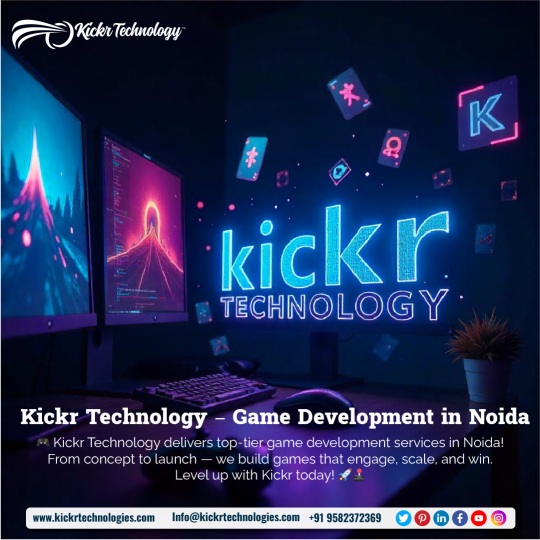
Kickr Deliver Best Game Development Services in Noida!
Kickr Technology delivers the best game development services in Noida, creating engaging, high-performance games with stunning graphics and seamless user experience.
To know more about our game development company, visit us at www.kickrtechnologies.com
#kickrtechnology#gamedevelopment#gamedevelopmentcompany#gamedevelopmentservice#mobilegamedevelopment#topgamedevelopment#gamedevelopmentcompanyinnoida#bestgamedevelopmentservice#bestgamedevelopmentcompany#bestgamedevelopmentcompanyinnoida
0 notes
Text
PacexGrowth is a leading Ludo game development company delivering high-performance, feature-rich, and engaging Ludo gaming solutions tailored to your business needs. Our experienced team ensures seamless gameplay, multiplayer functionality, and real-time updates to enhance user experience. With our Ludo game development service, we focus on creating interactive and revenue-generating apps that stand out in the competitive gaming market.
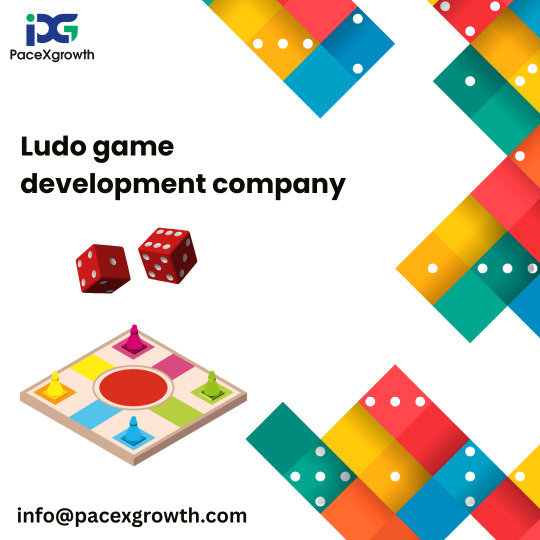
#LudoGameDevelopment#LudoGameApp#GameDevelopmentCompany#MobileGameDevelopment#LudoGamingSolutions#GamingAppDevelopment#PacexGrowth#GameDevIndia
1 note
·
View note
Text

Game Development Services
#metaversegamedevelopment#mobilegamedevelopment#gamedevelopmentcompany#gamedevelopment#unity3dgamedevelopment#unitygamedevelopmentcreate2dgameswithunity#unitygameenginecompany
0 notes
Text
Remember when mobile games meant simple time-killers, such as Snake or Tetris? These days, we now feel like ancient history. Mobile gaming has exploded into a massive industry with experiences that rival those found on dedicated consoles. Only when we thought mobile gaming could not improve, along with 5G to completely change the game.
As someone who watches this industry evolves, I can tell you that 5G is not just another incremental update; it is a complete revolution for players and developers alike. Let us examine how this lightning-fast network technology is transforming and reshaping mobile game development.
What Makes 5G: Such a Big Deal?
Speed That'll Make Your Head Spin
First, 5G is FAST. We are talking about speeds up to 100 times quicker than what you are used to with 4G. Instead of waiting forever for that game update to download, you will blink and it is done.
This changes everything for mobile game developers. They no longer have to obsess over compressing every texture and audio file to keep the download sizes small. Games that would have been downloaded by 5 GB can now be grabbed in seconds rather than minutes. This opens the door to console-quality graphics and audio, which were not previously practical.
I recently downloaded a 3GB game update while waiting for my coffee order – it finished before my latte arrived. That kind of speed was unimaginable just a few years ago.
Latency That's Basically Invisible
If you have ever played a fast-paced game on your phone and felt a frustrating delay between tapping the screen and seeing your character react, you have experienced pain of high latency. With 4G, we typically saw 50-100ms of lag – enough to make competitive gaming feel like you are playing underwater.
5G shrinks and lags down by as little as 1-10ms. This is so rapid that it is imperceptible to humans. For context, a single frame in a 60fps game takes approximately 16ms to display, so we are talking about response times that are faster than what your eyes can perceive.
For fighting games, shooters, racing, and other reflex-based genres, this was a complete game changer. Mobile game developers can now design based on the assumption that their players' actions will be registered immediately.
Room for Everyone at the Party
Have you ever been at a crowded event where your phone shows full bars but no load? This is because 4G networks can only handle approximately 4,000 devices per square kilometer. 5G bumps up to one million devices in the same area.
For mobile game developers, this means they can now confidently create experiences for thousands of simultaneous players in the same virtual space without worrying about network collapse. Imagine massive real-time battles with hundreds of players, all running smoothly on your phone while you are at a packed convention or sports stadium.
How is this change in game development?
Cloud Gaming That Actually Works
We have been hearing about cloud gaming for years, but let us be honest – on 4G, it was more frustration than fun. With 5G, services such as Xbox Cloud Gaming and GeForce NOW are finally delivering their promises.
This is huge for mobile game development because, suddenly, the processing power of your phone does not matter as much. Heavy lifting occurs in data centers, with the phone acting as a display and controller. I recently played a cutting-edge PC title on my three-year-old phone, which ran flawlessly – something that would have been impossible without 5G and cloud gaming.
For developers, this means they can build once and reach players across a huge range of devices, rather than having to create different versions for high-end and budget phones.
AR Games That Don't Feel Like Tech Demos
Remember the Pokémon GO craze? This involved simply scratching the surface of the AR gaming. With 5G, augmented reality games can access cloud processing to recognize objects in real time, place virtual items precisely in the real world, and create persistent changes in shared AR spaces.
I recently tried an AR game that transformed my neighborhood park into a fantasy battlefield, with trees becoming covered and park benches becoming resource points. The game recognized real-world objects instantly and incorporated them meaningfully into gameplay, all possible because of 5G's speed and low latency.
Mobile game developers are only beginning to tap into these possibilities, creating experiences in which the line between our world and the game world becomes increasingly blurry.
Multiplayer That Actually Feels Fair
Competitive mobile gaming has always had an asterisk next to it because connection quality varies widely between players. Someone with a slightly better ping has a significant advantage.
5G is leveling the playing field. With everyone enjoying similar ultralow latency connections, skill becomes the determining factor rather than having a better network. This is why we are seeing esports organizations take mobile competitions much more seriously now.
For mobile game development teams, this means investing more in competitive features and ranking systems, knowing that the technical foundation now supports fair competition.
Living Games That Never Stop Evolving
Remember when the games were finished products that rarely changed after release? In the 5G era, games are living entities that have evolved constantly.
Developers can push updates, new content, and seasonal changes without disrupting gameplay. A game world can transform dramatically while you're playing, with new buildings appearing, landscapes changing, or weather effects rolling in – all downloading seamlessly in the background.
I was playing a battle royale game last week when, in the middle of a match, a massive in-game concert started that transformed part of the map into a stage. Thousands of players experienced this simultaneously with zero lag – something that would have been a technical nightmare before 5G.
What Does This Mean for Developers and Players?
New Ways to Pay (and Get Paid)
The 5G revolution is changing how games make money. With cloud gaming becoming viable, subscription services are gaining popularity. Players are also more willing to pay premium prices for mobile games that deliver console-quality experiences.
For indie developers, this is a mixed blessing. The bar for quality is getting higher, but there are also new revenue streams opening up through cloud gaming packages and subscription services that might feature their games.
Rethinking Development Priorities
If you're in mobile game development, your priorities probably need to shift. Graphics and visual fidelity matter more than ever. Server infrastructure has become critical. Cross-platform play isn't just a nice-to-have anymore – players expect it.
I've talked with several studios that are bringing in console and PC developers to help elevate their mobile titles, recognizing that the technical limitations that once defined mobile gaming are rapidly disappearing.
New Players Entering the Game
The mobile gaming audience is expanding rapidly. Hardcore gamers who once dismissed mobile games are taking another look now that 5G enables experiences comparable to their consoles.
This is creating opportunities for developers to target segments that were previously unreachable on mobile. The teenager who spends hours on their PlayStation might now be equally engaged with mobile titles when they're away from home.
What Challenges Still Exist?
Not Everyone Has 5G Yet
While 5G is expanding rapidly, coverage is still uneven. Some regions have amazing coverage, while others are barely starting deployment. This creates headaches for developers who need to support players across different network environments.
Most studios are addressing this by creating experiences that gracefully scale – taking full advantage of 5G when it's available but still functioning (with reduced features) on 4G networks.
Phones Are Still... Phones
Even with cloud gaming, we're still dealing with mobile devices that have battery limitations, can overheat during intense gaming sessions, and have screens of various sizes.
Smart developers are finding ways to work around these limitations – like offering different visual modes for performance vs. battery life, or designing interfaces that work across everything from small phones to tablets.
It's Getting Expensive to Compete
Creating games that take full advantage of 5G capabilities isn't cheap. Higher-quality assets, complex server infrastructure, and cross-platform development all require significant investment.
This is unfortunately widening the gap between big publishers and indie developers, though middleware solutions and game engines are evolving to help level the playing field somewhat.
What's Coming Next?
Your Phone, PC, and Console Will Become One
The lines between gaming platforms are disappearing fast. With 5G, your progress, purchases, and player identity can follow you seamlessly between your phone, PC, and console.
I've been playing a racing game where I can start a career mode on my console at home, continue on my phone during my lunch break, and then pick up right where I left off on my PC in the evening. This kind of seamless experience is becoming the new normal.
AI Will Make Games Smarter
5G's bandwidth allows games to leverage cloud-based AI in ways that weren't possible before. This means NPCs with more realistic behaviors, worlds that adapt to how you play, and voice commands that actually work reliably.
I recently played a mobile RPG where the NPCs remembered my previous interactions and adapted their dialogue accordingly – all powered by a language model running in the cloud and streaming responses to my device.
Mobile Esports Will Go Mainstream
With the technical barriers falling away, mobile esports are gaining legitimacy. Tournament organizers are creating mobile-specific competitions with serious prize pools, and traditional esports organizations are fielding dedicated mobile teams.
This creates new opportunities for both players and developers, with additional revenue streams from competitive play and spectator features.
Wrapping Up: The Future Is Fast
The combination of 5G and mobile game development is creating possibilities that seemed like science fiction just a few years ago. Cloud gaming, seamless multiplayer, incredible AR experiences, and constantly evolving game worlds are just the beginning.
For players, this means better games, more consistent experiences, and new genres that simply weren't viable on mobile before. For developers, while the challenges are real, the opportunities are enormous.
As 5G continues rolling out globally, the distinction between "mobile games" and just "games" is disappearing. What matters isn't the device you're playing on, but the experience itself – and those experiences are getting better every day.
Whether you're playing or creating games, one thing's for sure – the 5G revolution is just getting started, and mobile gaming will never be the same again.
#gaming#mobile game development#multiplayer games#metaverse#blockchain#vr games#unity game development#mobilegamedevelopment
0 notes
Text
Looking to hire a game developer but not sure where to start?
From defining project requirements to evaluating portfolios, finding the right talent is crucial for a successful game. Whether you need Unity, Unreal Engine, or mobile game developers, the right hiring approach makes all the difference.
🔗 Read the full guide: Find and Hire a Game Developer
0 notes
Text
Thinking of Making a Game? Here’s Why Unity Is Your Best Bet

Introduction
Diving into game development is an exhilarating journey, but the first major hurdle is selecting the right engine. With countless options out there, Unity consistently rises above the rest. Whether you're an aspiring Unity game developer or an established studio, this engine offers the perfect mix of power, flexibility, and ease of use. But what makes it the ideal choice? Why should you put your faith in Unity? Let’s break it down.
1. The Cross-Platform Powerhouse
Unity isn’t just a game engine, it's a gateway to a vast gaming universe. Supporting more than 25 platforms, from Windows and macOS to PlayStation, Xbox, and AR/VR devices, Unity allows developers to build once and launch across multiple platforms. The ability to scale effortlessly from mobile to high-end consoles isn’t just convenient, it's game-changing. This is why many Unity game development companies trust Unity for multi-platform releases.
2. Beginner-Friendly, Expert-Approved
Simplicity and power rarely coexist, but Unity bridges the gap beautifully. New developers can ease in with an intuitive interface, a treasure trove of documentation, and endless video tutorials. But don’t be fooled beneath its approachable surface lies a robust system packed with advanced tools for industry veterans. Whether crafting a simple 2D puzzle or a sprawling open-world 3D adventure, Unity flexes to meet your needs, making it a preferred choice for any Unity game company looking to innovate.
3. A Community That Has Your Back
In game development, isolation is the enemy. Thankfully, Unity boasts one of the largest and most supportive communities in the industry. Stuck on a problem? Someone’s already solved it. Need assets? The Unity Asset Store is stocked with models, animations, scripts, and tools that accelerate development. The collective wisdom of millions of Unity game developers means that solutions are always within reach.
4. Graphics That Wow At Any Level
From indie charm to AAA polish, Unity’s rendering power is undeniable. Choose between the Universal Render Pipeline (URP) for optimized performance and the High Definition Render Pipeline (HDRP) for jaw-dropping visuals. Want cinematic-quality lighting, realistic shadows, or breathtaking reflections? Unity makes it happen, no matter your experience level.
5. 2D, 3D, AR, and VR Unity Masters It All
Unlike some engines that pigeonhole developers into a single genre or style, Unity excels across the board. Need crisp 2D sprite animations? Covered. High-fidelity 3D landscapes? Done. Augmented and virtual reality? Unity is a leader in AR and VR development, seamlessly integrating with Oculus, HoloLens, and other cutting-edge platforms. No matter where gaming goes, Unity game development companies are already leveraging its versatility.
6. C# The Perfect Balance of Power and Simplicity
Game engines live and die by their scripting languages. Unity’s choice? C# a language celebrated for being both beginner-friendly and immensely powerful. Unlike the steeper learning curve of C++, C# offers an accessible yet versatile coding experience. Its well-documented API ensures a smooth learning process for those stepping into programming, while seasoned developers can leverage its full potential for complex mechanics.
7. Cost-Effective Without Compromise
The barrier to entry? Practically non-existent. Unity Personal is free yes, free for developers earning under $100,000 annually. This means anyone, from solo indie devs to small studios, can bring their ideas to life without upfront costs. As revenue grows, Unity offers premium plans that scale with your needs. The result? A low-risk, high-reward development environment.
8. Always Evolving, Always Improving
Technology never stands still, and neither does Unity. With frequent updates, feature rollouts, and optimizations, Unity remains at the forefront of game development. Collaborations with giants like Microsoft, Google, and NVIDIA ensure ongoing enhancements, keeping Unity in sync with the latest gaming trends and hardware advancements.
9. Monetization and Analytics Built Right In
Creating a game is one thing, making money from it is another. Unity simplifies monetization through Unity Ads and Unity IAP (In-App Purchases), making it easy to generate revenue from ads or in-game transactions. Want insights into how players interact with your game? Unity Analytics offers deep data tracking to help refine user experiences and maximize engagement.
10. A Legacy of Success
Some of the world’s most beloved games were built on Unity. Think Monument Valley, Among Us, Hollow Knight, and Ori and the Blind Forest. These aren’t just indie hits, they're proof that Unity scales with ambition. Whether crafting a small passion project or aiming for global recognition, Unity game companies consistently push boundaries using this powerful engine.
The Verdict - Unity Reigns Supreme
If game development is your dream, Unity is your best bet. Its unparalleled cross-platform support, intuitive workflow, powerful rendering engine, and thriving community make it the ultimate tool for developers of all levels. Whether you're an independent Unity game developer or part of a major unity game development company, the possibilities are endless.
With Unity, you don’t just make games, you create experiences that reach players around the world.
The only question left - What will you build?
#UnityGameDevelopment#GameDevelopment#Unity3D#GameDev#IndieGameDev#UnityGameDeveloper#UnityEngine#UnityGameCompany#GameDesign#UnityGames#MobileGameDevelopment#UnityDevelopers#ARVRDevelopment#GamingIndustry#GameProgramming
1 note
·
View note
Text
The 5 Most Effective Augmented Reality Tools for Web Development
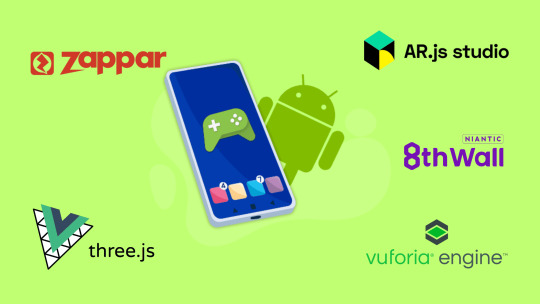
Introduction
Augmented Reality (AR) is changing how we interact with websites, making online experiences more interactive and engaging. The best part? No extra apps are needed WebAR allows AR elements to work directly in web browsers. This means businesses, from e-commerce to gaming, can integrate AR features effortlessly.
Many industries, including the best android game development company, are using AR to enhance user engagement and create more immersive web applications. In this article, we’ll explore five powerful AR tools that make web development more exciting and interactive.
1. 8th Wall – Pioneering WebAR Innovation
8th Wall is a leader in WebAR, allowing developers to create AR experiences directly in web browsers. No app downloads, just seamless AR.
Key Features -
No-App WebAR - Works directly in mobile browsers.
Cross-Platform Compatibility - Supports both Android and iOS.
Real-World Interactions - Includes marker-based and markerless AR.
Cloud Editor - Allows real-time collaboration on projects.
Why Use It?
For businesses wanting interactive marketing campaigns, virtual try-ons, or branded AR experiences, 8th Wall is a great choice. It’s especially useful for an android game development company usa aiming to add AR features to its games.
2. AR.js – Lightweight, Open-Source, and Powerful
AR.js is a free and efficient way to bring AR to websites. It’s an open-source JavaScript library that works smoothly on all devices.
Key Features -
Fast Performance - Optimized for web speed.
Multiple AR Modes - Supports marker-based, markerless, and location-based AR.
Cross-Browser Support - Works with Chrome, Safari, and Firefox.
Zero Cost - Ideal for developers on a budget.
Why Use It?
If you’re new to AR or need a simple solution, AR.js is perfect for experimenting with interactive elements. Many android game development company teams use AR.js to enhance their games with lightweight AR features.
3. Zappar – AR for Creative Experiences
Zappar provides an intuitive platform for businesses and developers to create interactive AR content. It’s a popular choice for WebAR and app-based AR.
Key Features -
ZapWorks Studio - A dedicated tool for AR development.
WebAR Support - Easily integrates into web pages.
Face and Image Tracking - Offers precise recognition for AR experiences.
SDK Integration - Works with JavaScript, Unity, and Three.js.
Why Use It?
Zappar is ideal for brands looking to create interactive marketing campaigns or engaging storytelling experiences. It’s also a great option for an android game development company india that wants to add AR elements to mobile games.
4. Three.js with WebXR – High-Quality 3D for AR
Three.js is a top choice for rendering 3D graphics in the browser. Combined with WebXR, it enables high-quality AR experiences.
Key Features -
Advanced 3D Graphics - Supports detailed rendering.
WebXR API Integration - Enables both AR and VR experiences.
Realistic Effects - Features lighting, shadows, and animations.
Strong Community Support - Extensive resources for developers.
Why Use It?
For developers wanting high-end AR applications, Three.js with WebXR is a powerful solution. Many android game development company associative groups use it for building immersive gaming experiences.
5. Vuforia – Enterprise-Grade AR
Vuforia is a robust AR platform known for precision and reliability. It’s widely used across industries like retail, manufacturing, and healthcare.
Key Features -
Advanced Image Recognition - Supports object and image-based tracking.
Cloud-Based Recognition - Ideal for large-scale applications.
Easy Integration - Works with WebAR frameworks and mobile SDKs.
Enterprise Security - Ensures data protection and stability.
Why Use It?
If you’re working on large-scale AR solutions, Vuforia is a reliable choice. A best android game developer company can use its tracking features to create realistic and interactive gaming environments.
Conclusion
WebAR has made AR more accessible, allowing businesses and developers to integrate immersive experiences without requiring additional apps. Whether it’s a lightweight solution like AR.js or a premium tool like Vuforia, there are plenty of options to fit different needs.
Many companies, including android game development company india professionals, are leveraging AR to create engaging web and mobile applications. As AR continues to evolve, it’s time to embrace this technology and take web development to the next level.
#AndroidGameDevelopment#GameDevelopment#AndroidGaming#GameDev#IndieGameDev#MobileGameDevelopment#GamingCommunity#GameDeveloper#ARGameDevelopment#GameProgramming
1 note
·
View note
Text
With advancements in mobile gaming technology, online poker continues to be a lucrative and exciting market. As 2025 unfolds, online poker businesses need to embrace AI-powered bots, cloud gaming, and immersive technologies to stay competitive. By investing in cutting-edge poker game development services, your business can stay ahead of the curve and offer unparalleled gaming experiences.
Say goodbye to boring traditional card games and hello to the excitement of online card gaming with KPIS. So, whether you’re a seasoned pro or a beginner at the game, join us as we explore the world of 𝐏𝐨𝐤𝐞𝐫 𝐆𝐚𝐦𝐞 𝐃𝐞𝐯𝐞𝐥𝐨𝐩𝐦𝐞𝐧𝐭 and learn what makes our games stand out from the rest.
Contact us today to get started on developing your next big poker gaming platform and take your business to the next level in 2025!
#PokerGameDevelopmentServices#PokerGameDevelopmentCompany#PokerGameDevelopment#OnlinePokerGame#GameDevelopment#GamingIndustry#OnlineGamingApp#MobileGameDevelopment#GameDevelopmentin2025#CardGameAppDevelopment#MobileGamingTechnology#AndroidGameDevelopment
0 notes
Text
Exploring the Future of Game Development on Mobile Platforms
The future of game development on mobile platforms is poised for exciting transformations as technology advances and player expectations evolve. Mobile gaming has already become a dominant force in the industry, and several key trends are shaping its future.
1. Enhanced Graphics and Performance
Advancements in mobile hardware are enabling developers to create games with console-quality graphics and performance. Modern smartphones are equipped with powerful processors and GPUs, allowing for more complex and visually stunning games. This trend will likely continue, pushing the boundaries of what mobile games can achieve in terms of visual fidelity and smooth gameplay.
2. AR and VR Integration
Augmented Reality (AR) and Virtual Reality (VR) are set to revolutionize mobile gaming experiences. With AR games like Pokémon GO already making waves, the integration of AR into mobile games is expected to become more sophisticated, blending virtual elements seamlessly with the real world. VR technology is also making its way into mobile platforms, offering immersive experiences through mobile-compatible VR headsets.
3. Cloud Gaming
Cloud gaming is emerging as a game-changer in mobile development. By streaming games from powerful servers to mobile devices, developers can deliver high-quality gaming experiences without being limited by hardware constraints. This technology not only enhances game performance but also broadens the accessibility of high-end games to a wider audience.
4. AI and Personalization
Artificial Intelligence (AI) is being increasingly utilized in mobile game development to create more dynamic and personalized experiences. AI can be used to develop smarter non-player characters (NPCs), tailor in-game content to individual preferences, and even optimize game difficulty levels based on player behavior.
5. Cross-Platform Play
Cross-platform play is becoming more common, allowing players to interact with others across different devices. This feature enhances the social aspect of gaming and ensures a more cohesive experience, regardless of the device being used.
In conclusion, the future of game development on mobile platforms is bright and full of potential. As technology continues to advance, we can expect more innovative and immersive experiences that push the boundaries of mobile gaming.
0 notes
Text
What Are the Key Steps in Mobile Game Development?

In the dynamic and competitive world of mobile gaming, understanding the key steps in the mobile game development process is essential for creating a successful and engaging product. A well-structured development approach not only enhances efficiency but also ensures the delivery of a high-quality game that meets market demands. Below, we outline the critical stages involved in mobile game development.
1. Conceptualization and Market Research
The foundation of any successful mobile game lies in a robust concept and thorough market research. This stage involves brainstorming ideas, identifying target audiences, and analyzing market trends.
Idea Generation
Begin by generating innovative and engaging game ideas. Consider unique gameplay mechanics, compelling storylines, and appealing themes. Involve your team in brainstorming sessions to foster creativity and diverse perspectives.
Market Analysis
Conduct comprehensive market research to identify current trends, popular genres, and potential competitors. Understanding what works and what doesn't in the market will help you refine your game concept and identify unique selling points.
Target Audience Identification
Clearly define your target audience by considering factors such as age, gender, interests, and gaming habits. Creating detailed player personas will help tailor the game to meet their preferences and expectations.
2. Pre-Production Planning
Pre-production is a crucial phase where you lay the groundwork for development. This includes defining the game's core mechanics, creating a project plan, and assembling your team.
Game Design Document (GDD)
Develop a comprehensive Game Design Document that outlines all aspects of the game, including gameplay mechanics, story, characters, levels, and art style. The GDD serves as a blueprint for the entire development process.
Technical Requirements
Identify the technical requirements and constraints of your game. This includes selecting the appropriate game engine, programming languages, and tools needed for development. Consider the platforms your game will be available on (iOS, Android, etc.).
Team Assembly
Assemble a talented team of developers, designers, artists, and testers. Clearly define roles and responsibilities to ensure efficient workflow and communication.
3. Prototyping and Concept Validation
Creating a prototype is essential for validating your game concept and identifying potential issues early in the development process.
Prototype Development
Develop a basic prototype that includes core gameplay mechanics and key features. This prototype doesn't need to be polished but should provide a clear representation of the game's functionality.
Testing and Feedback
Conduct internal testing sessions to gather feedback from your team. Identify any major flaws or areas for improvement and make necessary adjustments to the prototype.
4. Production and Development
This phase involves full-scale development, where the game takes shape through coding, designing, and asset creation.
Coding and Programming
Begin the coding process by building the game's core systems and mechanics. Use efficient coding practices to ensure performance and maintainability. Regular code reviews and unit testing can help maintain high code quality.
Art and Animation
Develop high-quality art assets, including characters, environments, and UI elements. Create animations that enhance the gameplay experience. Ensure that the visual elements align with the game's overall theme and style.
Audio Design
Integrate sound effects and music that complement the game's atmosphere and enhance player immersion. Consider hiring professional sound designers to achieve high-quality audio.
5. Testing and Quality Assurance
Thorough testing is crucial to ensure that your game is free of bugs and delivers a smooth experience across all intended devices.
Alpha and Beta Testing
Conduct alpha testing to identify and fix major issues. Once the game is stable, proceed to beta testing with a broader audience. Gather feedback on gameplay, performance, and overall user experience.
Automated and Manual Testing
Implement automated testing tools to streamline repetitive testing tasks. Complement automated tests with manual testing to catch issues that automated tests might miss.
6. Optimization and Performance Tuning
Optimizing your game for performance ensures that it runs smoothly on a wide range of devices, enhancing user experience and retention.
Code and Asset Optimization
Optimize code to improve performance and reduce load times. Compress and optimize art assets to ensure they do not hinder performance. Regularly profile the game to identify and address performance bottlenecks.
Device Compatibility
Test your game on various devices and screen sizes to ensure compatibility. Make necessary adjustments to provide a consistent experience across different platforms.
7. Launch Preparation and Marketing
Preparing for launch involves finalizing the game, developing a marketing strategy, and creating buzz around the game’s release.
Final QA and Polishing
Conduct a final round of quality assurance to ensure the game is polished and free of critical issues. Fine-tune gameplay, graphics, and audio to deliver a high-quality product.
Marketing Plan
Develop a comprehensive marketing plan that includes social media campaigns, influencer partnerships, and press releases. Create engaging promotional materials, such as trailers and screenshots, to attract potential players.
Soft Launch
Consider a soft launch in select markets to gather initial feedback and make final adjustments before a global release.
8. Post-Launch Support and Updates
Post-launch support is vital for maintaining player engagement and addressing any issues that arise after release.
Bug Fixes and Updates
Monitor player feedback and promptly address any bugs or performance issues. Regular updates with new content and features can help keep the game fresh and engaging.
Community Management
Engage with your player community through social media, forums, and in-game events. Building a strong community can enhance player loyalty and word-of-mouth promotion.
Conclusion
Understanding and implementing the key steps in mobile game development can significantly enhance the quality and success of your game. From initial conceptualization to post-launch support, each phase plays a critical role in delivering an engaging and high-performing game.
1 note
·
View note
Text
Looking For Mobile game development company London

The world of game development London has experienced exponential growth and popularity in recent years. Games have become a prominent form of entertainment, providing interactive experiences that engage players on various platforms. Whether it's PC, console, mobile, or virtual reality, the demand for high-quality games continues to rise. game developers offer a thrilling combination of creativity, technology, and business potential.
Get More info: https://www.jjswebworld.co.uk/service/game-development
#london#england#game#gamedev#gamedevelopment#webdevelopmentLondon#Manchester#uk#mobilegamedevelopment#mobile games#mobilegameplay#gamedevelopmentcompany#gamedevelopmentservice#topgamedevelopment
0 notes
Text
Kickr Deliver Best Game Development Services in Noida!
Kickr Technology delivers the best game development services in Noida, creating engaging, high-performance games with stunning graphics and seamless user experience.
To know more about our game development company, visit us at www.kickrtechnologies.com
#kickrtechnology#gamedevelopment#gamedevelopmentcompany#gamedevelopmentservice#mobilegamedevelopment#topgamedevelopment#gamedevelopmentcompanyinnoida#bestgamedevelopmentservice#bestgamedevelopmentcompany#bestgamedevelopmentcompanyinnoida
0 notes
Text
Best Mobile Game Development Company - Source Code Lab
https://sourcecodelab.co/mobile-game-development/
At Source Code Lab, we are a leading mobile game development company, that offers high-quality services to bring your dream game to life. Whether you’re a startup, a Fortune 500 company, or an established game firm, our skilled designers will guide you through every stage of the iOS and Android mobile game development process. We leverage our expertise and ongoing commitment to innovation to deliver successful products, backed by a team of expert developers, art directors, UX specialists, animators, and tech specialists.
0 notes